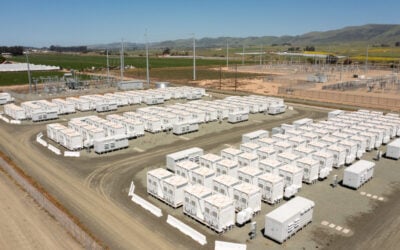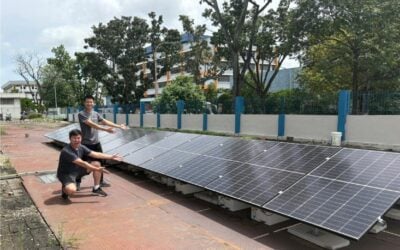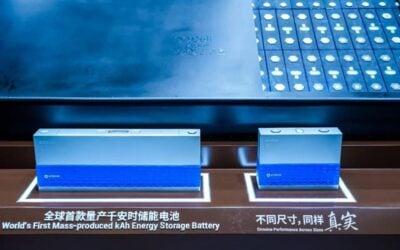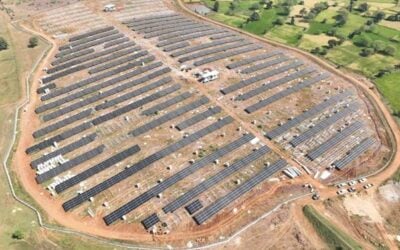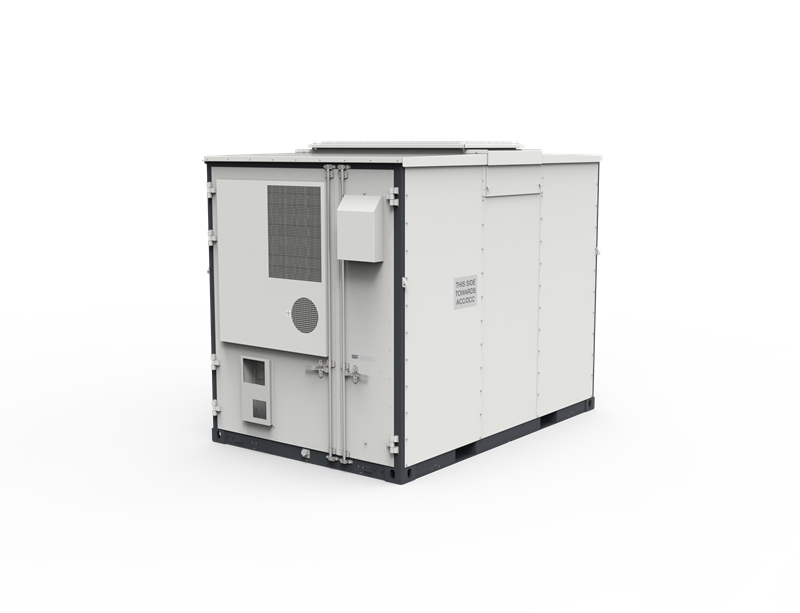
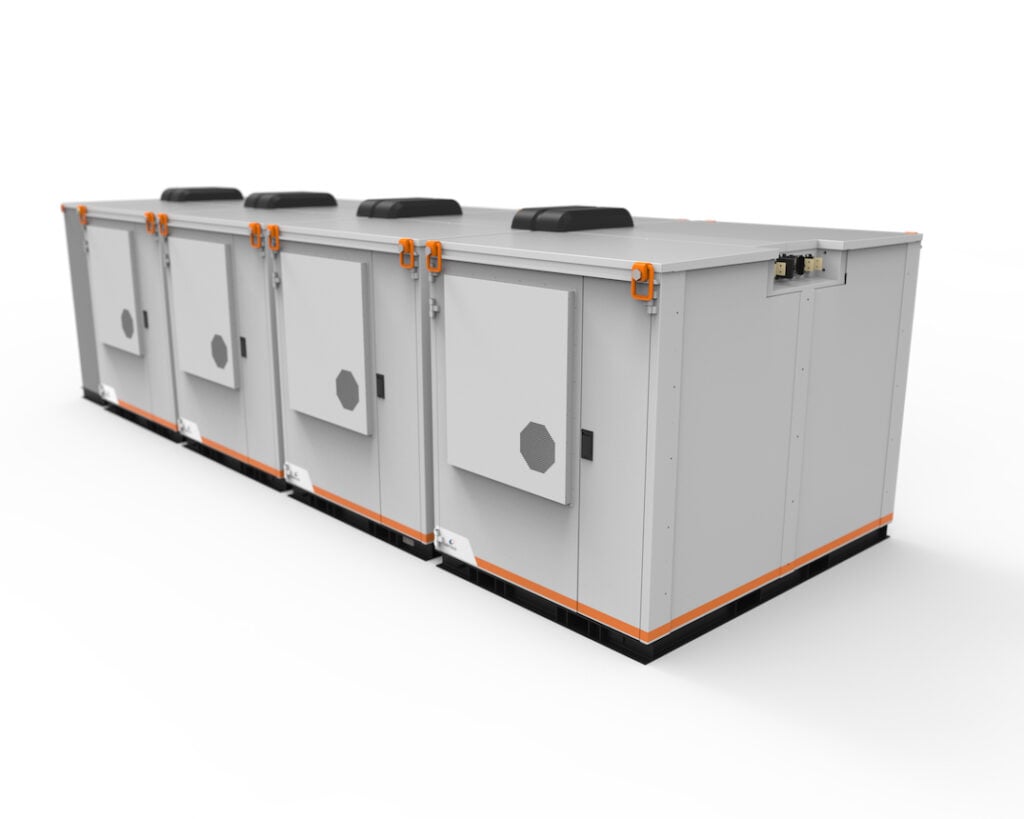
Wärtsilä Energy has launched its newest battery energy storage system (BESS) solution for utility-scale applications, claiming that it comes with enhanced safety features and improved energy density.
The global energy storage system integration and optimisation arm of Finnish power solutions and marine energy company Wärtsilä this week announced Quantum High Energy (QuantumHE), a new iteration of its Gridsolv Quantum BESS product.
Enjoy 12 months of exclusive analysis
- Regular insight and analysis of the industry’s biggest developments
- In-depth interviews with the industry’s leading figures
- Annual digital subscription to the PV Tech Power journal
- Discounts on Solar Media’s portfolio of events, in-person and virtual
Among its key features are the use of 306Ah lithium-ion (Li-ion) battery cells, which means it comes with 9% more energy density than previous versions, as well as fire protection and prevention systems that Wärtsilä said have been developed partly through extensive large-scale fire testing.
The industry has been trending towards increasing energy density in large-scale BESS, with customers seeking more compact solutions with smaller footprints.
Several other manufacturers are using larger format cells in their latest products. Those include Chinese manufacturers EVE Energy using a 628Ah cell branded ‘Mr. Big’ in a new 5MWh containerised BESS and Hithium, which also has a 5MWh container coming to market, based on a new 314Ah cell.
Wärtsilä is known to be using cells from another Chinese maker, CATL, but in September signed a multi-year supply deal with EVE Energy.
The Finnish company, which entered the energy storage space in 2017 through the acquisition of US-based Greensmith Energy, said the 306Ah cell not only enables 9% greater energy density, but also optimises the energy usable in a battery project’s lifecycle, meaning that large-scale solutions require 15% less land. An increase in energy density also means a reduction in the number of containerised units needed per site, which the company said would reduce associated costs for customers.
Emphasis on fire safety
Wärtsilä has for some time been on an outreach effort to emphasise and educate on the importance of fire safety, with no fire incidents recorded to date in any of its deployments.
In March, Wärtsilä Energy director of product management and hardware Darrell Furlong co-authored a Guest Blog for this site with battery fire safety expert Nick Warner of Energy Safety Response Group (ESRG), arguing that a number of high-profile fires have dented confidence in the BESS industry.
One of the key points made in that blog was that often it’s only thermal runaway, which occurs in batteries at the cell level, that is taken as the main concern, when in fact fire safety should be thought about at the system level.
This point was pushed further by Furlong in an interview with Energy-Storage.news a couple of months later, when the Wärtsilä product director explained that the company’s approach was to always consider the worst case scenario outcome of incidents.
GridSolv Quantum, Furlong said, was put through large-scale fire testing that exceeded the standards of common industry tests and requirements like UL9540A burn testing, and which ESRG’s Nick Warner later commented would contribute to the understanding of the risks by authorities having jurisdiction (AHJ), the local bodies which ultimately decide whether or not a BESS should be permitted for development in their area.
The new QuantumHE’s safety features include active dehumidification, pre-fabricated fire walls that prevent propagation of fire from one Quantum unit to the next, external door latches which allow first responders easy access to the inside of units, gas detection ports and a dual sprinkler system which is centrally located. It also has leakage protection for liquid components like electrolytes, coolants and refrigerants.
QuantumHE will be integrated with Wärtsilä’s GEMS energy management platform, which is capable of site and portfolio level monitoring, control and optimisation of energy assets. GEMS has been considered a key differentiator in the market for Wärtsilä Energy and was one of the key reasons why software-centric Greensmith Energy was bought six years ago.
“Over the past year, we have conducted several large-scale fire safety tests and participated in numerous standards to improve the entire industry’s safety record,” Furlong commented on the new product, calling it the “safest, most competitive design” on the market.
Storage business potentially for sale
The launch comes soon after parent company Wärtsilä said it was weighing up options around its ownership of the energy storage business. The division is profitable with just over a billion US dollars’ worth of annual sales, and the Finnish company said it is not ruling out any options, which could include retaining a stake, through a strategic review.
Deutsche Bank analyst Panu Laitinmäki spoke to Energy-Storage.news Premium earlier this month and said that while it seems likely a full or partial sale could bring in investment to maximise that profitability, the energy storage business could dilute the margins of the company versus areas of the business that are already more profitable.
“My thinking is that they want to maximise the growth of the business and could potentially get to €2 billion (US$2.19 billion) or €3 billion in the next few years. But, they have a 12% EBIT target and the energy storage business only just recently reached breakeven and I forecast has a long-term EBIT margin of around 5%. So if energy storage grows that much it will become a really big chunk of Wärtsilä and will dilute their margins quite a lot,” Laitinmäki said, adding that spinning out the storage business as a separate entity could enable Wärtsilä ’s Energy Storage and Optimisation arm to find different kinds of investors.
Energy-Storage.news’ publisher Solar Media will host the 9th annual Energy Storage Summit EU in London, 20-21 February 2024. This year it is moving to a larger venue, bringing together Europe’s leading investors, policymakers, developers, utilities, energy buyers and service providers all in one place. Visit the official site for more info.

